The coats of arms of the U.S. states are coats of arms, that are an official symbol of the state, alongside their seal. Eighteen states have officially adopted coats of arms. The former independent Republic of Texas and Kingdom of Hawaii each had a separate national coat of arms, which are no longer used.
Heraldic arms were worn (embroidered) on a coat which knights wore over their armor, hence coat of arms,[1] a term which dates back roughly 1,000 years[2] to jousting tournaments.[3] A state coat of arms may exist independently of the seal, but the reverse is not generally the case.[4] A seal contains a coat of arms or other devices[5][6] whereas a state coat of arms constitutes the bulk of a seal,[6][7] except for the wording identifying it as the "Great Seal of the State of..."[8] A "seal" has been described as the design impressed on public or legislative official documents,[9] whereas a coat of arms generally appears for illustrative purposes. Examples include flags and banners,[10] and state militia uniform caps[11] and buttons,[12] as well as specifically-designed regimental coats of arms for U.S. Infantry Regiments, and National Guard units.[13]
A coat of arms of a nation or state is usually the design or device of the obverse of its seal. It is an official emblem, mark of identification, and symbol of the authority of the government of a nation or state. A nation or state's coat of arms is oftentimes referred to as the national or state arms.
— Office of the Secretary of State of Texas, [14]
Federal
President
Vice president
Military
States
Heraldic coats of arms
| State | Arms | Adoption | Blazon | Article |
|---|---|---|---|---|
| Alabama | 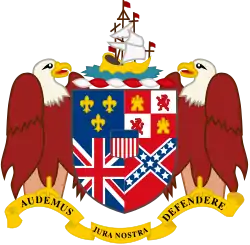 |
Coat of arms of the state of Alabama, adopted March 14, 1939[18] Statehood – 14 December 1819 Arms – 29 December 1868[19] |
Quarterly, the first Azure three fleurs-de-lis Or; the second quarterly first and fourth Gules a triple-towered castle Or masoned Sable and ajoure the first [viz., Azure], second and third Argent a lion rampant the third [viz., Gules] crowned, langued and armed the second [viz., Or]; third the first [viz., Azure], the crosses-saltires of St. Andrew and St. Patrick quartered per saltire counter changed argent and the third [viz., Gules]; the latter fimbriated of the second, surmounted by the cross of St. George of the third, fimbriated as the saltire; fourth the third [viz., Gules] a saltire the first [viz., Azure] fimbrated the fifth [viz., Argent], in saltire ten stars the fifth; overall an escutcheon of the third [viz., Gules] six pellets the fifth [viz., Argent] under a chief of the first [viz., Azure]. | Coat of arms of Alabama (Wikimedia Commons category) |
| Connecticut |  |
Statehood – 9 January 1788 Arms – October 1842[20] Arms of the state of Connecticut, adopted March 24, 1931[21] |
On a shield of rococo design: Argent three grape vines Proper supported and fructed. | Coat of arms of Connecticut (Wikimedia Commons category) |
| Delaware |  |
Statehood – 7 December 1787 Arms – 18 January 1847[22] Coat of arms of the state of Delaware, adopted in 1777[23] |
Coat of arms of Delaware (Wikimedia Commons category) | |
| Hawaii |  |
Coat of arms of the state of Hawaii | Coat of arms of Hawaii (Wikimedia Commons category) | |
| Louisiana | .jpg.webp) |
Statehood – 30 April 1812 Arms – 23 December 1813[nb 1][nb 2] |
Coat of arms of Louisiana (Wikimedia Commons category) | |
| Maryland |  |
Statehood – 28 April 1788 Arms – 18 March 1876[26][nb 3][nb 4] |
Quarterly first and fourth, a paly of six Or and Sable, a bend counterchanged; quarterly second and third, quarterly Argent and Gules a cross bottony counterchanged. Above the shield an earl's coronet surmounted by a barred helm affronté Argent. | Coat of arms of Maryland (Wikimedia Commons category) |
| Massachusetts |  |
Statehood – 6 February 1788 Arms – 13 December 1780[29] Coat of arms of the commonwealth of Massachusetts, adopted in 1775 (by Legislature, re-affirmed by Governor Hancock and Cabinet on December 13, 1780) |
Azure a Native American thereon dressed in a shirt and moccasins in his right hand a bow and in his left an arrow point downward Or, in chief dexter shield having a blue field or surface with a Native American thereon, dressed in a shirt and moccasins, holding in his right hand a bow, and in his left hand an arrow, point downward, all of gold; and, in the upper corner of the field, above his right arm, a silver star with five points. The crest is a wreath of blue and gold, on which in gold is a right arm, bent at the elbow, clothed and ruffled, with the hand grasping a broadsword. | Coat of arms of Massachusetts (Wikimedia Commons category) |
| Mississippi |  |
Statehood – 10 December 1817 Arms – 6 February 1894[nb 5] Arms of the state of Mississippi, adopted February 7, 2001[32] |
Coat of arms of Mississippi (Wikimedia Commons category) | |
| Missouri |  |
Statehood – 10 August 1821 Arms – 11 January 1822[33][nb 6] Coat of arms of the state of Missouri[35] |
Coat of arms of Missouri (Wikimedia Commons category) | |
| New Jersey | 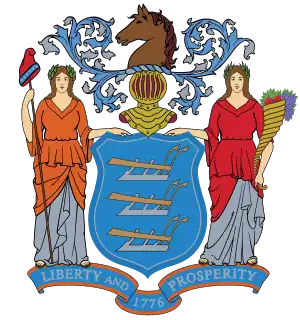 |
Statehood – 18 December 1787 Arms – 10 September 1776[36][nb 7] Coat of arms of the state of New Jersey |
Azure, three ploughs Proper; supporters, Liberty and Ceres. The Goddess Liberty to carry in her dexter hand a pole, proper, surmounted by a cap gules, with band azure at the bottom, displaying on the band six stars, argent; tresses falling on shoulders, proper; head bearing over all a chaplet of laurel leaves, vert; overdress, tenne; underskirt, argent; feet sandaled, standing on scroll. Ceres: Same as Liberty, save overdress, gules; holding in left hand a cornucopia, or, bearing apples, plums and grapes surrounded by leaves, all proper; head bearing over all a chaplet of wheat spears, vert. Shield surmounted by sovereign's helmet, six bars, or; wreath and mantling, argent and azure. Crest: A horse's head, proper. Underneath the shield and supporting the goddesses, a scroll azure, bordered with tenne, in three waves or folds; on the upper folds the words "Liberty and Prosperity"; on the under fold in Arabic numerals, the figures "1776" | Coat of arms of New Jersey (Wikimedia Commons category) |
| North Dakota |  |
Coat of arms of the state of North Dakota, adopted in 1957 | Device: On an Indian arrowhead point to base Or a bend vert charged with three mullets of the first, in base a fleur-de-lis of the second.
Crest: On a wreath Or and azure, a sheaf of three arrows argent armed and flighted gules behind a stringed bow fessways Or with grip of the second (gules). Motto: Strength from the soil. |
Coat of arms of North Dakota (Wikimedia Commons category) |
| Pennsylvania | 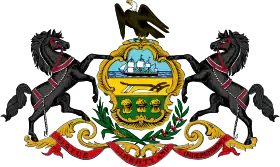 |
Statehood – 12 December 1787 Arms – 17 March 1875[38] Coat of arms of the commonwealth of Pennsylvania, adopted 1778 |
Tierced per fess azure, Or, and vert; in chief a ship at sea proper; in fess a plough proper; in base three sheaves of wheat proper | Coat of arms of Pennsylvania (Wikimedia Commons category) |
| Rhode Island |  |
Statehood – 29 May 1790 Arms – 24 February 1875[39][nb 8] Arms of the state of Rhode Island, adopted 1 February 1882[41] |
Coat of arms of Rhode Island (Wikimedia Commons category) | |
| Texas |  |
Statehood – 29 December 1845 Arms – 25 January 1839[42] Arms of the state of Texas[14] |
Coat of arms of Texas (Wikimedia Commons category) | |
Non-heraldic shields and seals
| State | Arms | Blazon | Article |
|---|---|---|---|
| Alaska |  |
Statehood – 3 January 1959 Arms – 3 January 1959 |
Seal of Alaska (Wikimedia Commons category) |
| Arizona |  |
Coat of arms of Arizona (Wikimedia Commons category) | |
| Arkansas | _proof.jpg.webp) |
Statehood – 15 June 1836 Arms – 3 May 1864[43] |
Coat of arms of Arkansas (Wikimedia Commons category) |
| California |  |
Statehood – 9 September 1850 Arms – 2 October 1849[19] |
Coat of arms of California (Wikimedia Commons category) |
| Colorado | .jpg.webp) |
Statehood – August 1, 1876 Arms – March 15, 1877 CRS 24-80-901[44] |
Coat of Arms of the State of Colorado (Wikimedia Commons category) |
| Florida |  |
Statehood – 3 March 1845 Arms – 6 August 1868[45] |
Coat of arms of Florida (Wikimedia Commons category) |
| Georgia | .jpg.webp) |
Statehood – 2 January 1788 Arms – 8 February 1799[46] |
Coat of arms of Georgia (U.S. state) (Wikimedia Commons category) |
| Idaho | .jpg.webp) |
Organic Act – 3 March 1863[47] Arms – 13 March 1866[48] Statehood – 3 July 1890 |
Coat of arms of Idaho (Wikimedia Commons category) |
| Illinois | _proof.jpg.webp) |
Statehood – 3 December 1818 Arms – 7 March 1867[49] |
Coat of arms of Illinois (Wikimedia Commons category) |
| Indiana | .jpg.webp) |
Statehood – 11 December 1816 Arms – 13 December 1816[50] |
Coat of arms of Indiana (Wikimedia Commons category) |
| Iowa | .jpg.webp) |
Statehood – 28 December 1846 Arms – 25 February 1847[51] |
Coat of arms of Iowa (Wikimedia Commons category) |
| Kansas | .jpg.webp) |
Statehood – 29 January 1861 Arms – 25 May 1861[52][nb 9] |
Coat of arms of Kansas (Wikimedia Commons category) |
| Kentucky | .jpg.webp) |
Statehood – 1 June 1792 Arms – 20 December 1792[53][nb 10] |
Coat of arms of Kentucky (Wikimedia Commons category) |
| Maine |  |
Statehood – 15 March 1820 Arms – 9 June 1820[26][55] Coat of arms of the state of Maine, adopted June 9, 1820[56] |
Coat of arms of Maine (Wikimedia Commons category) |
| Michigan | 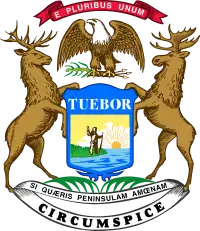 |
Statehood – 26 January 1837 Arms – 2 June 1835[36] Coat of arms of the state of Michigan, adopted 1835, modified 1911[57] |
Coat of arms of Michigan (Wikimedia Commons category) |
| Minnesota | .jpg.webp) |
Statehood – 11 May 1858 Arms – 16 July 1858[58] |
Coat of arms of Minnesota (Wikimedia Commons category) |
| Montana | .jpg.webp) |
Organic Act – 26 May 1864[47] Arms – 9 February 1865[59][nb 11] Statehood – 8 November 1889 |
Coat of arms of Montana (Wikimedia Commons category) |
| Nebraska | .jpg.webp) |
Statehood – 1 March 1867 Arms – 15 June 1867[61][nb 12] |
Coat of arms of Nebraska (Wikimedia Commons category) |
| Nevada | .jpg.webp) |
Statehood – 31 October 1864 Arms – 24 February 1866[62] |
Coat of arms of Nevada (Wikimedia Commons category) |
| New Hampshire | .jpg.webp) |
Statehood – 21 June 1788 Arms – 12 February 1785[63] |
Coat of arms of New Hampshire (Wikimedia Commons category) |
| New Mexico | .jpg.webp) |
Organic Act – 9 September 1850[64] Arms – 1 February 1887[65] Statehood – 6 January 1912 |
Coat of arms of New Mexico (Wikimedia Commons category) |
| New York |  |
Statehood – 26 July 1788 Arms – 27 March 1809[66] Coat of arms of the state of New York |
Coat of arms of New York (Wikimedia Commons category) |
| North Carolina | .jpg.webp) |
Statehood – 21 November 1789 Arms – 1835[67] |
Coat of arms of North Carolina (Wikimedia Commons category) |
| Ohio | .jpg.webp) |
Statehood – 1 March 1803 Arms – 1 March 1803[nb 13] Arms of the state of Ohio, adopted 1953, modified 1996[68] |
Coat of arms of Ohio (Wikimedia Commons category) |
| Oklahoma |  |
Statehood – 16 November 1907 Seal – 1905[69] (Oklahoma has no arms, only a great seal) |
Seal of Oklahoma |
| Oregon | .jpg.webp) |
Statehood – 14 February 1859 Arms – 2 June 1859[70] |
Coat of arms of Oregon (Wikimedia Commons category) |
| South Carolina | .jpg.webp) |
Statehood – 23 May 1788 Arms – 2 April 1776[71] |
Coat of arms of South Carolina (Wikimedia Commons category) |
| South Dakota | _proof.jpg.webp) |
Statehood – 2 November 1889 Arms – 1 October 1889[72] |
Coat of arms of South Dakota (Wikimedia Commons category) |
| Tennessee | .jpg.webp) |
Statehood – 1 June 1796 Arms – 24 April 1802[73][nb 14] |
Coat of arms of Tennessee (Wikimedia Commons category) |
| Utah | .jpg.webp) |
Organic Act – 9 September 1850[64] Arms – 9 September 1850[74] Statehood – 4 January 1896 Coat of arms of the state of Utah |
Coat of arms of Utah (Wikimedia Commons category) |
| Vermont |  |
Statehood – 4 March 1791 Arms – 20 February 1779[75][nb 15] Coat of arms of the state of Vermont, adopted 1862 (by Act No. 11) |
Coat of arms of Vermont (Wikimedia Commons category) |
| Virginia | .jpg.webp) |
Statehood – 25 June 1788 Arms – 1776[nb 16][nb 17] |
Coat of arms of Virginia (Wikimedia Commons category) |
| Washington | 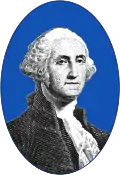 |
Organic Act – 2 March 1853[64] Arms – 28 February 1854[79] |
Coat of arms of Washington (Wikimedia Commons category) |
| West Virginia |  |
Statehood – 20 June 1863 Arms – 26 September 1863[80][nb 18] Arms of the state of West Virginia, adopted September 26, 1863 |
Coat of arms of West Virginia (Wikimedia Commons category) |
| Wisconsin | 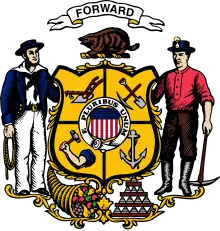 |
Statehood – 29 May 1848 Arms – 29 December 1851[81] Coat of arms of the state of Wisconsin[82] |
Coat of arms of Wisconsin (Wikimedia Commons category) |
| Wyoming | .jpg.webp) |
Organic Act – 25 July 1868[83] Statehood – 10 July 1890 |
Coat of arms of Wyoming (Wikimedia Commons category) |
Origin and history

The coats of arms of the U.S. states date back to the admission of the first states to the Union. Despite the widely accepted practice of determining early statehood from the date of ratification of the United States Constitution, many of the original colonies referred to themselves as states shortly after the Declaration of Independence was signed on 4 July 1776. Committees of political leaders and intellectuals were established by state legislatures to research and propose a seal and coat of arms. Many of these members were signers of the Articles of Confederation, Declaration of Independence, and United States Constitution. Several of the earliest adopted state coats of arms and seals were similar or identical to their colonial counterparts.
State Arms of the Union, illustrated by Henry Mitchell and published by Louis Prang (known as the father of the lithographic industry), offers historically accurate renderings of the state's coats of arms as they existed in 1876. An accomplished engraver with the Bureau of Engraving and Printing for 40 years, Mitchell was responsible for engraving several coats of arms for official state use as well as arms for well-known educational and philanthropic organizations. The illustrations are presented alongside proof impressions from the engraved dies used to print the state arms on the first issue of United States National Bank Notes.
Published in 1876 by Louis Prang and illustrated by Henry Mitchell, State Arms of the Union contains a chromolithographed title page depicting the Great Seal of the United States and seven color plates with 45 state and territorial coats of arms. The book was likely published for the Philadelphia Centennial Exposition.[86]
Louis Prang was born 12 March 1824 in Breslau. At the age of 13 he began apprenticing for his father[87] and learned to dye and print calico, as well as wood and metal engraving.[88] Prang emigrated to Boston in 1850 and became an illustrator for a number of local publications.[89] Starting a business partnership in 1856 to manufacture copper and lithographic plates, Prang became sole proprietor in 1860 and named the company L. Prang & Co.[88] He specialized in color printing, more specifically "chromolithography"[87] Prang spent over four decades studying and creating a standard of colors[90] and engraved and printed maps, prints of contemporary celebrities, and color reproductions of famous works of art.[89] In 1875 Prang was responsible for introducing the Christmas card to America.[88] He created an annual design competition for his Christmas cards (run between 1880 and 1884), and judges included John La Farge, Samuel Colman, Stanford White, and Louis Comfort Tiffany.[87] Some of the notable winners included Elihu Vedder, Rosina Emmet Sherwood, Edwin Blashfield,[87] Thomas Moran, and Will Hicok Low.[89] Prang has become known as the "father of the American Christmas card",[87][88][89] as well as the "father of the lithographic industry".[90][91]
Henry Mitchell was born in New York in 1835 and went to school in Philadelphia.[92] At the age of 10 he began working with his uncle[93] to learn the trade of gem and steel engraving.[94] By the age of 20 (1855), Mitchell had engraved the official seals for the Kingdom of Hawaii.[94][95] In 1868 Mitchell joined the Bureau of Engraving and Printing and for 40 years engraved stamped envelopes.[96] Through his BEP work, Mitchell was also responsible for engraving the seal of the Secretary of the Navy and the Internal Revenue Service.[95] He also engraved the state seals for Massachusetts,[94] New York,[95] New Hampshire,[95] Vermont,[94] Rhode Island,[93] and Wisconsin.[97] Outside of state and federal government engraving, Mitchell engraved the seals and coats of arms for many well-known institutions which include Harvard University, Society of the Cincinnati, and Boston Public Library.[95] He engraved the Philadelphia Centennial Exhibition award medal (1876) which was struck in the Philadelphia Mint.[98] In 1891, Mitchell was invited by the Secretary of the Treasury to join a committee to evaluate the artistic design proposals for a new issue of U.S. coins. The two other members were Charles E. Barber, Chief Engraver of the United States Mint, and Augustus Saint-Gaudens.[99][100]
In addition to being considered an expert on heraldry,[95] Mitchell was regarded as one of the best engravers[92][93] and medal designers in the United States.[101]
A state coat of arms provided an opportunity to convey the natural and industrial resources available to its residents.[102] Common themes depicted in state arms include farming, industry, transportation (e.g., boats, trains, and wagons), and nature (e.g., sunsets and mountains). The Ohio and Indiana state arms depict fairly substantial mountains in the distance. In reality, the highest points in Ohio and Indiana are Campbell Hill (1,550 feet (470 m))[103] and Hoosier Hill (1,257 feet (383 m))[104] respectively.
When State Arms of the Union was published in 1876, some existing arms were not included (e.g., Arizona and Washington Territory). At the time, Alaska was classified as the Department of Alaska (1867–84) and became the District of Alaska (1884–1912) before becoming the Territory of Alaska (1912–59). The Alaska territorial seal was designed in 1910[105] and adopted in 1913.[106] On 3 January 1959 Alaska became the 49th U.S. State.[107] The Oklahoma Territory (1890–1907) Organic Act was approved on 2 May 1890, and a territorial seal was adopted on 10 January 1893.[108] Hawaii, formerly the Kingdom of Hawaii (1795–1893), Republic of Hawaii (1894–98), and then Territory of Hawaii (1898–1959) became the 50th U.S. State on 21 August 1959.[109] None of the territories or states mentioned above had a coat of arms represented on national currency.
Authorization
The design of a state coat of arms or seal has generally been authorized by a provision in the state constitution or a legislative act. In most instances a committee (more often than not consisting of three members)[110][111][112][113] was appointed to study the issue, seek advice from qualified artists, historians, legal scholars, etc., and report back to the authorizing legislative body with a design for their approval. Historically, this committee has consisted of notable members of society and elected officials.
The first committee to design the Great Seal of the United States was appointed on 4 July 1776 by the Second Continental Congress and consisted of Benjamin Franklin, John Adams, Thomas Jefferson.[114] Their design was rejected on 20 August 1776. The second committee (James Lovell, John Morin Scott, and William Churchill Houston) design met with the same fate.[110] It was the third committee (Arthur Middleton, Elias Boudinot, John Rutledge, who consulted with William Barton) that submitted a design which was approved on 20 July 1782.[110]
Individual states approached their coats of arms and seals in a similar manner (i.e., seeking direction from the statesmen and scholars of their community). A few of those involved in the design of state arms and seals include (but is not limited to): John Jay and Gouverneur Morris (New York);[111] Francis Hopkinson (New Jersey);[115] David Rittenhouse and George Clymer (Pennsylvania);[113] and George Mason, Benjamin Franklin, Benjamin West, and Thomas Jefferson (Virginia).[116]
An impression of the Great Seal of a state (or its coat of arms) has long been required on official documents ranging from deeds to legislative acts. It was the emblem that certified the authenticity of a given document[14][117] or that the authority of the state was invested in said document.[117] Judicial decisions upheld the need for a valid seal and/or coat of arms on notarized documents.[nb 19]
One of the more compelling legislative actions recognizing the legal importance/authority of the state seal and arms occurred in February 1873 when a joint session of the United States Congress refused to recognize Arkansas's electoral votes in the November 1872 presidential election.[118] The official tally of the state's electoral votes was submitted with an invalid seal (bearing the coat of arms of the office of the Secretary of the State of Arkansas versus the seal of the state of Arkansas bearing the state arms).[118][119][120]
Courts and state legislatures also opined on the inappropriate uses of state seals and arms. Most states barred their use for any kind of advertising.[nb 20] Reproduction for corporate use was similarly prohibited[121] and such infractions were classified as offenses against public property.[122] The 2003 Code of Federal Regulations pertaining to the Bureau of Alcohol, Tobacco, Firearms and Explosives prohibits the use of state seals or coats of arms in product branding so as not to mislead the public into thinking that a commercial product has been endorsed by a government organization.[123]
Other jurisdictions
| District/Territory | Arms | Blazon | Article |
|---|---|---|---|
| District of Columbia |  |
Organic Act – 21 February 1790[64] Arms – 3 August 1871[124] |
Coat of arms of the District of Columbia (Wikimedia Commons category) |
| Puerto Rico |  |
Coat of arms of the Commonwealth of Puerto Rico |
Counties
Florida
Maryland
Virginia
Texas
See also
- United States heraldry
- Historical coats of arms of the U.S. states from 1876
- List of U.S. state, district, and territorial insignia – a list of state flags, seals and coats of arms
- Seals of the U.S. states
- Seals of governors of the U.S. states
- Flags of governors of the U.S. states
- Armorial of Europe
- Armorial of Mexico
Notes
- ↑ The illustrated Louisiana coat of arms represents a small design change in 1864, but the concept and design elements were in place since 1813.[24]
- ↑ The Louisiana coat of arms on the back of the 1882BB was engraved by Louis Delnoce of the Bureau of Engraving and Printing.[25]
- ↑ The illustrated coat of arms of Maryland was the tenth version of the seal, and a restoration to the description offered by Lord Baltimore on 12 August 1648).[27]
- ↑ The Maryland coat of arms on the back of the 1882BB was engraved by W.W. Rice of the Bureau of Engraving and Printing.[28]
- ↑ In 1861 Mississippi adopted a coat of arms and state flag. However, in 1865 the approval was rescinded leaving Mississippi without official state arms until 1894.[30] On 6 February 1894 the proposed design for the state coat of arms was approved.[31]
- ↑ The Missouri seal and arms were designed by Judge Robert William Wells.[34]
- ↑ New Jersey coat of arms was designed by Pierre Eugene Du Simitiere.[37]
- ↑ The Rhode Island state coat of arms on the back of the 1882BB was engraved by Timothy House of the Bureau of Engraving and Printing.[40]
- ↑ The Kansas state coat of arms on the back of the 1882BB was engraved by Timothy House of the Bureau of Engraving and Printing.[40]
- ↑ The Kentucky coat of arms on the back of the 1882BB was engraved by Alfred Jones of the Bureau of Engraving and Printing.[54]
- ↑ According to the State Constitution of Montana, in the event of a transition from a Territorial to State government, the Territorial Seal would remain effective until expressly changed by legislative action.[60]
- ↑ The illustrated arms represent the change from the territorial to state arms. However, the BEP engraved arms were never updated.
- ↑ While the seal of Ohio had experienced several unauthorized varieties in use, in 1868 legislature reverted the official design to the initial seal from the state constitution of 1803.[6]
- ↑ The Tennessee state coat of arms on the back of the 1882BB was engraved by Timothy House of the Bureau of Engraving and Printing.[40]
- ↑ On 25 November 1862, Vermont legislature formally recognized the existing seal and coat of arms.[76]
- ↑ The coat of arms was engraved in Paris and not ready until 4 September 1779.[77]
- ↑ The Virginia coat of arms on the back of the 1882BB was engraved by James Bannister of the Bureau of Engraving and Printing.[78]
- ↑ Drawings by Joseph H. Diss Debar.[10]
- ↑ Tickner et al. v. Roberts, 11 La. 14 (Louisiana Supreme Court March 1837) ("...notarial instruments were required to be authenticated by a seal, containing the coat of arms of the territory, the name and surname of the notary, his official capacity, and the place in which he exercised his office...the protest in this case, lacking the seal, which the law of that State prescribed, it appears to us, ought not to be received in evidence in our courts.")..
- ↑ For example, see Commonwealth v. R.I. Sherman Manufacturing Company, 189 Mass. 76 (Massachusetts Supreme Judicial Court 8 Sep 1905) ("The Massachusetts statute prohibiting the use of its arms or seal for advertising or commercial purposes is not in conflict with the clause of the Constitution of the United States investing Congress with power to regulate commerce among the several states")..
References
Citations
- ↑ Pinnock, William (1840). A Catechism of Heraldry: Explaining the Nature and Use of Arms and Armoury. Whittaker and Co. p. 3.
- ↑ Clark, Hugh; Wormull, Thomas (1854). An Introduction to Heraldry. Henry Washbourne & Co. p. 1.
arms heraldry.
- ↑ Clark, Hugh; Wormull, Thomas (1854). An Introduction to Heraldry. Henry Washbourne & Co. p. 3.
arms heraldry.
- ↑ Nainfa, John A. (1909). "Costume of Prelates of the Catholic Church: According to Roman Etiquette". John Murphy Company. John Murphy: 139.
- ↑ Crabb, George (1823). Universal Technological Dictionary or Familiar Explanations of the Terms Used in All Arts and Sciences. Vol. 2. Baldwin, Cradock, and Joy. p. 466.
- 1 2 3 Tannehill, Joseph W. (1917). Ohio Interrogation Points. Vic Donahey (Auditor of the State). pp. 19–20.
- ↑ Wisconsin Legislative Reference Bureau (1985). State of Wisconsin Blue Book (1985-1986). Department of Administration (Wisconsin). pp. 958–960.
- ↑ Moore, Opha (1907). "The Great Seal of Ohio". The Ohio Illustrated Magazine. The Ohio Magazine Publishing Company. 2 (1): 252–53.
- ↑ Crabb, George (1823). Universal Technological Dictionary or Familiar Explanations of the Terms Used in All Arts and Sciences. Vol. 2. Baldwin, Cradock, and Joy. p. 466.
- 1 2 Harris, John T. (1916). West Virginia Legislative Handbook and Manual and Official Register. The Tribune Printing Co. pp. 350–51.
- ↑ Utah Military Department (1902). Regulations for the National Guard of Utah. p. 79.
- ↑ Adjutant General's Office (1901). Rules and Regulations Governing the Kansas National Guard. W.Y. Morgan, State Printer. p. 108.
- ↑ Swinton, William (1870). History of the Seventh Regiment, National Guard, State of New York. Fields, Osgood, & Co. p. 3.
coat of arms state militia regimental.
- 1 2 3 "The Texas State Seal". sos.state.tx.us. Texas Secretary of State. Retrieved 7 July 2022.
- ↑ Zieber, Eugene. Heraldry in America: A Guide with 1000 Illustrations. Mineola, N.Y.: Dover Publications, 2006.
- ↑ Army Regulation 840-10, Heraldic Activities: Flags, Guidons, Streamers, Tabards, and Automobile and Aircraft Plates Archived 2010-06-07 at the Wayback Machine
- ↑ "Dui,Ssi, Coa". Archived from the original on 2006-04-27. Retrieved 2006-04-27.
- ↑ "Official Symbols and Emblems of Alabama". State Government. Alabama Department of Archives and History. Retrieved July 24, 2011.
- 1 2 Zieber, 1895, p. 112.
- ↑ Zieber, 1895, p. 118.
- ↑ "The Amoral Bearings". State Government. Official State Website. Retrieved July 24, 2011.
- ↑ "An Act to Authorize... the Great Seal..." Laws of the State of Delaware. S. Kimmey (Printer). 10 (2): 106. 1847.
- ↑ "Civic Heraldry of the United States (Delaware)". State Government. Heraldry of the World. Archived from the original on August 5, 2010. Retrieved July 24, 2011.
- ↑ Society, Louisiana Historical (1898). "The State Seal". Publications of the Louisiana Historical Society. 2: 20.
- ↑ Hessler, 1993, p. 99.
- 1 2 Shankle, 1941, p. 196.
- ↑ Bateman, Wilfred (1902). "The Great Seal of Maryland". Maryland Manual. Wm. J. C. Dulany Co.: 100.
- ↑ Hessler, 1993, p. 250.
- ↑ Willson, 1864, p. 99.
- ↑ Stone, J.M. (1894). "Eighteenth Day". Mississippi Legislature (House). Clarion-Ledger Publishing Company: 194–195.
- ↑ Stone, J.M. (1894). "Thirty-First Day". Mississippi Legislature (House). Clarion-Ledger Publishing Company: 351.
- ↑ "State Symbols". State Government. Mississippi.Gov. Archived from the original on August 14, 2008. Retrieved July 24, 2011.
- ↑ Stevens, Walter B. (1921). "Missouri's "Armorial Achievement"". Centennial History of Missouri. The S.J. Clarke Publishing Company: 195. ISBN 9780722207710.
- ↑ "The Great Seal of Missouri". Missouri Secretary of State Website. Retrieved 8 August 2014.
{{cite journal}}: Cite journal requires|journal=(help) - ↑ "The Missouri State Flag". State of Missouri. Netstates.com. Retrieved 2011-09-21.
- 1 2 Zieber, 1895, p. 144.
- ↑ Barlow, Catherine B. (1915). "State Arms of New Jersey". Daughters of the American Revolution Magazine. 46/47.
- ↑ "Report of the Commissioners to Correct the Coat of Arms of the Commonwealth of Pennsylvania". Miscellaneous Documents Read in the Legislature of the Commonwealth of Pennsylvania. B.F. Meyers, State Printer. 3: 1113. 1875.
- ↑ Shankle, 1941, p. 210.
- 1 2 3 Hessler, 1993, p. 175.
- ↑ "State Symbols". State Government. RI.Gov. Retrieved July 24, 2011.
- ↑ Shankle, 1941, p. 213.
- ↑ Shankle, 1941, p. 183.
- ↑ "Colorado Revised Statutes". Colorado Office of Legislative Legal Services. Retrieved May 13, 2023.
- ↑ Shankle, 1941, p. 190.
- ↑ Zieber, 1895, p. 127.
- 1 2 Leeson, Michael A. (1885). History of Montana. Warner, Beers & Company. pp. 235–37.
- ↑ "The Coat of Arms of Idaho". Journal of the Fourth Session of the Council of Idaho Territory. Idaho "Statesman" Publishing Company Printers: 175–76. 1867.
- ↑ Shankle, 1941, p. 192.
- ↑ Zieber, 1895, p. 129.
- ↑ "The Great Seals of Iowa". The Annals of Iowa. Historical Department of Iowa. 11 (1): 576. 1915.
- ↑ Shankle, 1941, p. 194.
- ↑ Zieber, 1895, p. 131.
- ↑ Hessler, 1993, p. 180.
- ↑ Zieber, 1895, p. 133.
- ↑ "Civic Heraldry of the United States (Maine)". State Government. Heraldry of the World. Archived from the original on October 7, 2011. Retrieved July 24, 2011.
- ↑ "Coat of Arms". State Government. Secretary of State. Retrieved July 24, 2011.
- ↑ "The State Seal of Minnesota". The Legislative Manual of the State of Minnesota. Minnesota Secretary of State: 9–10. 1907.
- ↑ Council Journal of the First Legislative Assembly of Montana Territory. D.W. Tilton & Co. 1864. p. 294.
- ↑ Judson, Katharine B. (1912). Montana: "the Land of Shining Mountains". A.C. McClurg & Co. p. 235.
- ↑ The Statutes of Nebraska. Culver, Page & Hoyne. 1867. pp. 863–864.
- ↑ Shankle, 1941, p. 201.
- ↑ Hammond, Otis G. (1916). History of the Seal and Flag of the State of New Hampshire. State of New Hampshire. p. 31.
- 1 2 3 4 Organic Acts for the Territories of the United States. Government Printing Office. 1900. p. 3.
- ↑ "Seal – Territory". Acts of the Legislative Assembly of the Territory of New Mexico. J.A. Carruth, Printer, Binder and Blank Book Manufacturers. 27: 229. 1887.
- ↑ "An Act… Authorizing the making [of] a new Great Seal..." Laws of the State of New York. Websters and Skinner. 5: 504. 1809.
- ↑ "The Great Seal". North Carolina Journal. Edwards & Broughton Printing Company: 230. 1921.
- ↑ "Ohio". State of Ohio. gwav.tripod.com. Retrieved 2011-09-21.
- ↑ "Great Seal of the State of Oklahoma". sos.ok.gov. Retrieved 3 March 2021.
- ↑ "General Repealing Acts". The Organic and Other General Laws of Oregon. Henry L. Pittock, State Printer: 946. 1866.
- ↑ "The Seals of South Carolina". South Carolina Historical and Genealogical Magazine. South Carolina Historical Society. 7 (4): 225. 1906.
- ↑ "Constitution of the State of South Dakota". Statutes of the State of South Dakota. H.B. Parsons. 1: 49. 1901.
- ↑ Garrett, W.R.; Bass, John M. (1901). "The Great Seal of the State of Tennessee". The American Historical Magazine. Peabody Normal College. 6: 210.
- ↑ Zieber, 1895, p. 183.
- ↑ Shankle, 1941, p. 215.
- ↑ "An Act Establishing the State Arms, Seal and Flag". The Acts and Resolves Passed by the General Assembly of the State of Vermont: 30–31. 1862.
- ↑ Zieber, 1895, p. 191.
- ↑ Hessler, 1993, p. 42.
- ↑ Statutes of the Territory of Washington. Geo. B. Goudy, Public Printer. 1855. p. 379.
- ↑ Zieber, 1895, p. 193.
- ↑ "The Second Great Seal". Proceedings of the State Historical Society of Wisconsin at Its Fifty-Fifth Annual Meeting. Wisconsin Historical Society: 300–301. 1907.
- ↑ "Wisconsin State Symbols" (PDF). State of Wisconsin. legis.wisconsin.gov. Archived from the original (PDF) on 2012-09-27. Retrieved 2011-09-21.
- ↑ Farrand, Max (1896). The Legislation of Congress for the Government of the Organized Territories of the United States. Wm. A. Baker. p. 80.
- ↑ U.S. Geological Survey Geographic Names Information System: Mount Logan
- ↑ Galbreath, Charles Burleigh (1902). "Seals and Ohio flag". Monthly Bulletins of the Ohio State Library. Columbus, Ohio: Ohio Board of Library Commissioners. 2 (4): 1–5 – via Google Books.
- ↑ "State Arms of the Union". Antiquarian Booksellers Association. Retrieved 16 July 2014.
- 1 2 3 4 5 "Louis Prang, Father of the American Christmas Card". New York Historical Society Museum & Library. Retrieved 14 July 2014.
- 1 2 3 4 "Louis Prang Paper (1848 – 1932)". Archives of American Art/Smithsonian. Retrieved 14 July 2014.
- 1 2 3 4 "Printer Louis Prang issued 'Checks'". Bank Note Reporter. Retrieved 14 July 2014.
- 1 2 "Louis Prang Dead". The American Stationer. Lockwood Trade Journal Company. 65 (25): 3. 1909.
- ↑ "Proceedings of the One Hundred and Fiftieth Annual Meeting". Massachusetts Charitable Mechanic Association. C.M. Barrows Company: 53. 1910.
- 1 2 "Proceedings of the One Hundred and Fiftieth Annual Meeting". Massachusetts Charitable Mechanic Association. C.M. Barrows Company: 54. 1910.
- 1 2 3 "Death of Henry Mitchell". Geyer's Stationer. 48 (1187): 4. 1909.
- 1 2 3 4 "Proceedings of the One Hundred and Fiftieth Annual Meeting". Massachusetts Charitable Mechanic Association. C.M. Barrows Company: 55. 1910.
- 1 2 3 4 5 6 "Obituary – Henry Mitchell, Engraver". The Numismatist. American Numismatic Association. 22 (11): 310. 1909.
- ↑ "Making the Government's Stamped Envelopes". Harper's Weekly. Harper & Brothers. 51 (2617): 249. 1907.
- ↑ Dammann, Theodore (1929). "The Great Seal and Coat of Arms of Wisconsin". The Wisconsin Blue Book. The State Printing Board: 876.
- ↑ Giberti, Bruno (2002). Designing the Centennial. The University Press of Kentucky. p. 161. ISBN 0813122317.
- ↑ Annual Report of the Director of the Mint. Government Printing Office. 1891. p. 70.
- ↑ "New Designs for our Silver Coins". The Times (Philadelphia). 30 May 1891. p. 2. Retrieved 9 August 2014 – via Newspapers.com.

- ↑ "Current News of the Fine Arts". The New York Times. 19 August 1894. p. 19. Retrieved 9 August 2014 – via Newspapers.com.

- ↑ Huntoon & Shiva, 2013, p. 12.
- ↑ Ferriter, Robert M. (2009). United States Interstate Mapping System (1 ed.). Robert M. Ferriter Publications. p. 205. ISBN 9781434371133.
- ↑ Ferriter, Robert M. (2009). United States Interstate Mapping System (1 ed.). Robert M. Ferriter Publications. p. 202. ISBN 9781434371133.
- ↑ Kimura, Greg W. (2009). Alaska at 50 – The Past, Present, and Next Fifty Year of Alaska Statehood. University of Alaska Press. p. 6. ISBN 978-1-60223-081-1.
- ↑ Johnson, Joyce (2002). Alaska (Hello U.S.A.). Lerner Publications. p. 71. ISBN 9780822540519.
- ↑ "A Brief History of Alaska" (PDF). Alaska Statehood Celebration Commission Website. Archived from the original (PDF) on 30 December 2013. Retrieved 27 July 2014.
{{cite journal}}: Cite journal requires|journal=(help) - ↑ "Grand Seal of the Territory of Oklahoma" (PDF). Oklahoma State University. Archived from the original (PDF) on 20 May 2013. Retrieved 26 July 2014.
- ↑ "Hawaii Statehood, August 21, 1959". The National Archives. Retrieved 26 July 2014.
- 1 2 3 Hunt, Gaillard (1911). "The History of the Department of State". The American Journal of International Law. Baker, Voorhis & Company. 5: 415–32.
- 1 2 Preble, George H. (1917). Origin and History of the American Flag. Vol. 2. Nicholas L. Brown. p. 616.
- ↑ Grimes, J. Bryan (1907). The Great Seal of the State of North Carolina. R.D.W. Connor, Secretary. p. 26.
- 1 2 Pilcher, James E. (1902). The Seal and Arms of Pennsylvania. W.I. Stanley Ray (State Printer). p. 6.
- ↑ The Encyclopedia Americana. The Encyclopedia Americana Corporation. 1919. p. 362.
- ↑ Journal of the Thirteenth Senate of the State of New Jersey. Morris R. Hamilton. 1857. p. 45.
- ↑ Evans, 1910, p. 31.
- 1 2 "Use of the Great Seal of Utah". Utah Department of Administrative Services. Archived from the original on 19 December 2013. Retrieved 8 August 2014.
{{cite journal}}: Cite journal requires|journal=(help) - 1 2 Counting Electoral Votes: Proceedings and Debates of Congress Relating to Counting the Electoral Votes. Government Printing Office. 1876. p. 407.
1872 election arkansas electoral vote.
- ↑ Historical Statistics of the United States, Colonial Times to 1970. Vol. 2. Bureau of the Census. 1975. p. 1069.
- ↑ Hinds, Asher C. (1907). Hinds' Precedents of the House of Representatives of the United States. Vol. 3. Government Printing Office. p. 272.
- ↑ "Use of Seal and Coat of Arms by Corporations". The Corporation Journal. The Corporation Trust Company System (47): 53. 1915. Retrieved 30 June 2014.
- ↑ "Offenses Against Public Property". Laws of the State of Delaware. Chas. L. Story. 28 (1): 687. 1915.
- ↑ "Alcohol, Tobacco Products and Firearms". Code of Federal Regulations. Office of the Federal Register, National Archives and Records Administration. 2003.
- ↑ Shankle, 1941, p. 189.
Sources
- Evans, Edward S. (1910). "The Seals of Virginia". Report of the Virginia State Library. Davis Bottom. 7.
- Friedberg, Arthur L.; Friedberg, Ira S. (2013). Paper Money of the United States: A Complete Illustrated Guide With Valuations (20th ed.). Coin & Currency Institute. ISBN 978-0-87184-520-7.
- Hessler, Gene (1993). The Engraver's Line – An Encyclopedia of Paper Money & Postage Stamp Art. BNR Press. ISBN 0-931960-36-3.
- Huntoon, Peter W. (1995). United States Large Size National Bank Notes. Society of Paper Money Collectors, Inc. ISBN 0-9648774-1-4.
- Huntoon, Peter; Shiva, Andrew (2013). "Seal Varieties on Series 1882 National Bank Note Backs". Paper Money. spmc.org. 52 (1): 10–20.
- Newman, Eric P. (2008). The Early Paper Money of America (5 ed.). Krause Publications.
- Shankle, George E. (1941). State Names, Flags, Seals, Songs, Birds, Flowers, and Other Symbols (Revised ed.). H.W. Wilson Company.
- Willson, Marcius (1864). American History... Ivison, Phinney, Blakeman & Co.
- Zieber, Eugene (1895). Heraldry in America. The Bailey, Banks & Biddle Company.
Further reading
- Huntoon, Peter; Shiva, Andrew (2013c). "Philatelist was Catalyst for Revisions". Paper Money. spmc.org. 52 (5): 331–338.
- Prather, Dewitt G. (1986). United States National Banknotes and Their Seals. Dewitt G. Prather. ISBN 0-9616836-0-0.
- Shiva, Andrew; Huntoon, Peter (2013). "Wyoming & Idaho State Seals & Utah Territorials". Paper Money. spmc.org. 52 (3): 182–195.
- Stauffer, David M. (1907). American Engravers Upon Copper and Steel. The Grolier Club of the City of New York.
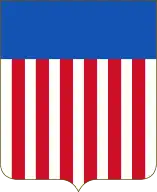

.svg.png.webp)


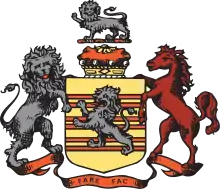
.svg.png.webp)

